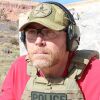Editor’s Note: The following column is part of our TacticaList series, a collection of expert columns and features on all things tactical — from fishing and hunting to camping and shooting, and pertain to a broad audience of law enforcement, military, sport shooters, hunters, and beyond. These columns are featured in our monthly TacticaList newsletter. Check out our most recent issue and let us know what you think! Click here to subscribe to the TacticaList.
The Greek warrior-poet Archilochus once said “We don’t rise to the level of our expectations, we fall to the level of our training.”
I recently had the chance to train with some local TEMS (Tactical EMS) — and after a 15 year hiatus from working on an ambulance — I was able to see firsthand how much in the medical world has changed.
These changes in tactics, coupled with some of the newest critical life-saving gear, can make a huge difference to modern day men and women who carry a firearm — whether for their profession or personal preference.
TCCC Origins
There are so many reasons to thank our veterans. One of the less obvious ones is called Tactical Combat Casualty Care (TCCC). Created by SOCOM (Special Operations Command), this strategic protocol was introduced in a 1996 issue of Military Medicine.
I’d been an EMT for three years at that point, working in the back of a civilian ambulance. The ideas driving TCCC came straight from the battlefield. The overarching theme behind TCCC was to decrease preventable combat deaths, so some of the ideas espoused by TCCC were in direct conflict with what I’d been taught.
Namely, I was taught to treat health emergencies prioritized with the ABCs: airway, breathing, and circulation. I was also taught to not use tourniquets. We controlled bleeding with direct pressure and supplemental pressure points if needed. While TCCC started in 1996, it continued to evolve through battles fought in the Middle-East. American war fighters were being shot and blown up with IEDs (Improvised Explosive Devices), causing medical professionals to further reassess needs for treatment. They studied wound data and learned some interesting things.
Only 6 percent of deaths occurred due to airway obstructions, but 60 percent died from hemorrhage or bleeding out, according to the Fundamentals of Combat Casualty Care (2012). Accordingly, priorities shifted. Circulation became the number one priority, reordering the old list to CAB: circulation, airway, and breathing. Battlefield physicians and medics realized the care immediately after an injury greatly contributed to the survivability of the patient. Tourniquets were distributed and used liberally, greatly increasing survival rates among the injured.
Civilian Applications
The advent of TCCC is something that can be successfully ported to modern law enforcement for on and off-duty use, as well as other professions. You don’t have to be a paramedic and you don’t have to wait for EMS to provide life-saving treatment.
The TEMS I trained with preached two things everyone with a gun should carry: a tourniquet, and combat gauze.
What to Carry
The immediate application for these two products for those who carry a firearm is somewhat obvious. Those using guns to stop gun violence may be shot — have the ability to treat these injuries on your person. An Individual First Aid Kit (IFAK) is great but not always practical. At a minimum, carry a tourniquet and some combat gauze. TEMS cautions to mount the tourniquet somewhere easily seen on your person, saving crucial seconds. They also suggest you practice applying a tourniquet with one hand in case of a disabling injury.
There are some great products on the market that reflect this trend in emergency medicine. Each has different benefits and limitations. Having these items and being proficient in their use can save lives.
(Photo courtesy Sean Curtis)
1. Tourniquets. In general, all tourniquets are applied as high on the limb as possible (also contrary to previous schools of thought). As you can see, there are multiple companies that offer several styles of tourniquets. Above from left to right are RE Factor R.A.T.S, SWAT-T, C-A-T, and SOFTT.
They should be tightened until the bleeding stops, then set. Do not remove a tourniquet in the field. Attempt to indicate somewhere on the patient (using a marker) the exact time the tourniquet was applied. Above all, get proper training on medical equipment before you use it.
2. Gauze. Gauze has been an old standby of medics forever. Used to cover or pack a wound, gauze has multiple uses. Over the years hemostatic (stops bleeding) agents have been used in conjunction with gauze. Quikclot now offers a gauze impregnated with hemostatic agents. This way a wound can be packed and the agent addresses the wound’s bleeding without entering the bloodstream and clotting elsewhere. Representatives from Quikclot pointed out their product’s labeled use is for direct pressure on wounds. My TEMS instructors told me to “pack the wound,” meaning maintain direct pressure while pushing the gauze into the wound.
3. Belt Trauma Kit (BTK)
Quikclot recently introduced a kit which contains a SWAT Tourniquet and Combat Gauze in one small pouch. This convenient item attaches to a belt (duty belt also) so that it’s within arm’s reach should a gunshot wound need to be treated.
Conclusion
Archilochus knew we could not hope to perform any better than our lowest level of training. However, he didn’t mention that training can become outdated. It is important that we keep up with the current practices which were so hard won by our forces in Iraq, Afghanistan, and other places. This knowledge was paid for with life-altering and life-ending injuries. A quick scan of training resources indicates a positive trend — these tools and skills are becoming much more readily available.
You don’t have to be Special Forces, SWAT, or a paramedic to use these techniques. Learn what to do. Carry the gear to do it. The life you save may be your own.



